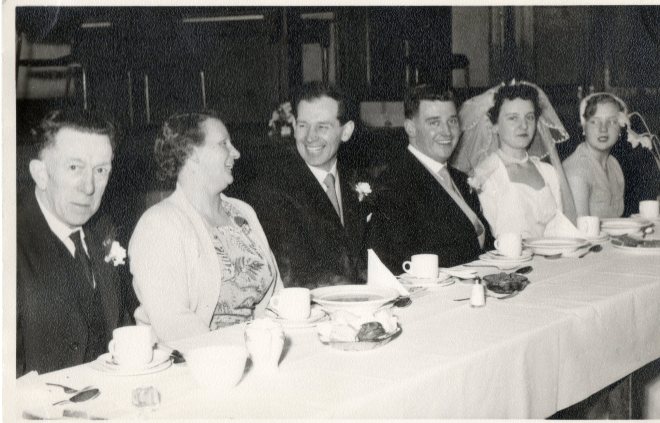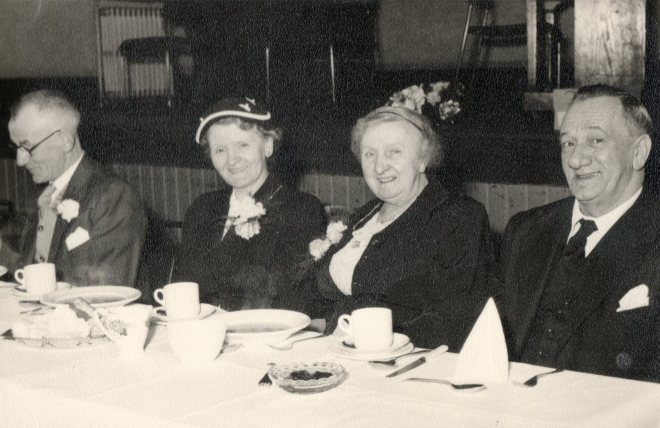… there’s a mystery (or two).
Apologies for the terrible pun, but I’ve just been looking through my 2 x great grandmother’s Will. Susan Forbes died in 1912, leaving what seems like (certainly for my family) a reasonably tidy estate.

The first part of Susan Forbes’ Last Will and Testament
1912 being well before the advent of “plain English” Wills, I’ve struggled a wee bit to unpick all the jargon and get to the juicy bits – who got what! In fact, I’ve actually been a bit sidetracked by a couple of mysteries.
Who was John Boyd?
Susan Forbes named three Trustees in her will; her sons David and William Nicholson – and also John Boyd, Teacher, Dysart.
I initially assumed that John Boyd was a son-in-law since, as well as her two sons, Susan had three daughters (Mary, Elizabeth and Annie) who survived to adulthood. All three are named in her Will along with their husbands. Mary married a George Brown, a Joiner; Elizabeth married a David Oliphant, a Grocer, and my great grandmother, Annie married Thomas Elder, an Ironmonger. So no John Boyd there.
The 1911 census shows a John Boyd aged 64, School Master, living at 33 Normand Road, Dysart along with his wife of 34 years – Jessie – and three adult daughters. John’s place of birth was Perthshire, and although I’ve found branches of my family in that region, the Forbes-Nicholson lot seem to have been in Fife (in fact in and around Kirkcaldy) for generations, so there’s no obvious Perth connection. Jessie Boyd, however, was shown as having been born in Dysart.
My next thought was that Jessie Boyd may have been a sister of either Susan Forbes, or her husband, Andrew Nicholson. That didn’t seem to be the case, so I used some of my dwindling supply of Scotland’s People credits to try and find the marriage of John and Jessie. The only one I found that fitted the time-frame (I assumed they married in Fife on the basis that it seemed more likely he or his family had travelled from Perthshire to Fife (like so many others looking for work) than that she had travelled to Perthshire, married then come back to Fife).
It’s testimony to how much I love a mystery that I actually used up my last credits to see the extract of the Marriage Register. It looks like the right John Boyd; the age matched the census and his occupation was given as Public School Teacher. Jessie’s maiden name is Watt, and that’s not a name I’ve found anywhere in my family tree so far. John’s mother’s maiden name was Scott. I was about to write that this hasn’t appeared in my family tree either EXCEPT THAT …
… my great grandmother Annie Nicholson (daughter of Susan Forbes of the cryptic Will), had an illegitimate son in 1894, named Andrew Scott Nicholson. His father is not named on his birth certificate and I had wondered where the Scott came from. At the time Annie was a Public School Teacher – the same as John Boyd.
Is it too far-fetched that my 2 x great grandmother named as a Trustee in her Will the married-to-someone-else father of her illegitimate grandson? Susan Forbes seems to have raised her grandson – despite his mother living around the corner with her husband and legitimate children. She also left Andrew £100 in her Will. Actually, she left it in Trust – earning interest until Andrew reached majority (not sure what age that would be – 18 maybe?). The more I learn about Susan, the more I realise she was a very canny woman.
So there’s my first mystery? Who was John Boyd and why did Susan Forbes make him a Trustee?
I know that the Fife County Archive has Minute Books for schools in Dysart that cover the period my great grandmother was a teacher there. If I ever get my UK trip organised, I’ll have a look and try to find out if John Boyd was a colleague. Meantime, I’ll try to think of other connections that I might be able to verify.
Any suggestions about this very welcome!
And so to the second mystery …
where does time go when I’m blogging? Actually that’s not it, but I’ve just seen the clock, and I’ll have to make the second mystery another post.
Bye for now.
Featured image thanks to photo credit: <a href=”http://www.flickr.com/photos/joelmontes/4762384399/”>JoelMontes</a> via <a href=”http://photopin.com”>photopin</a> <a href=”http://creativecommons.org/licenses/by-sa/2.0/”>cc</a>











